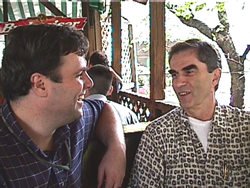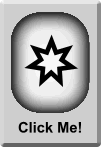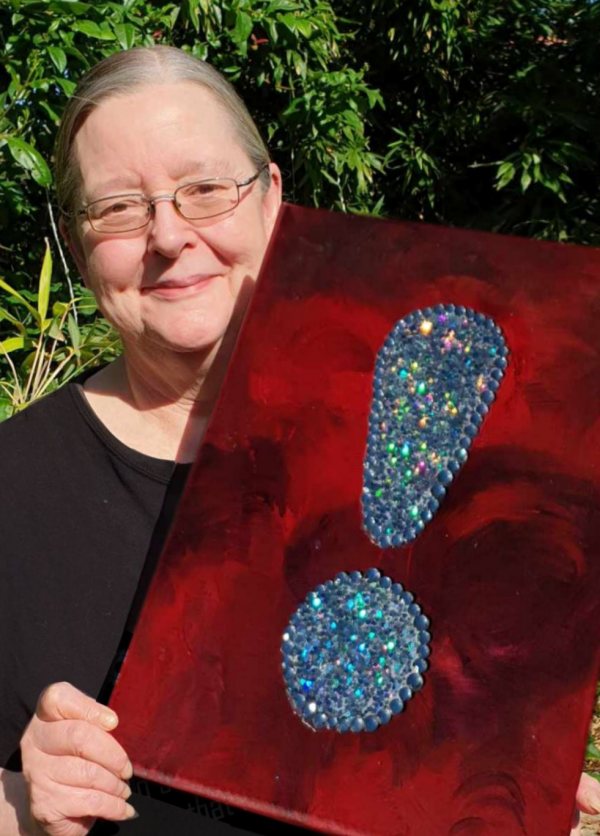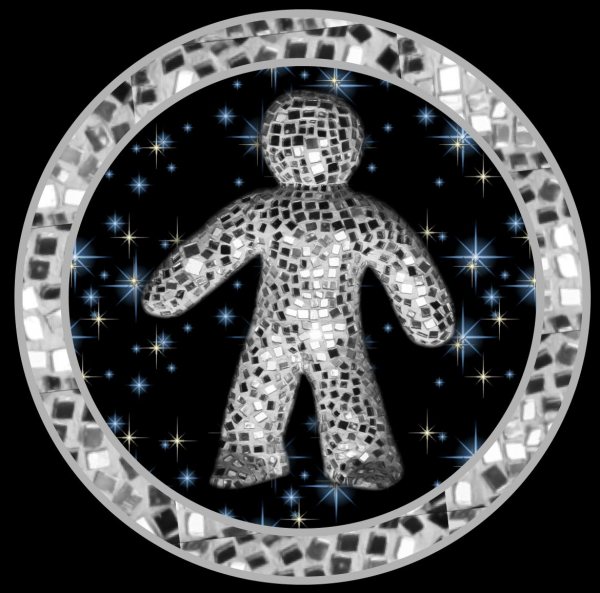|
Project Sanctuary - Interview With
Bob Bisaillon
A master NLP trainer and workshop leader
who shares his experiences
so others can have a better life

Tom Carroll interviewing Bob Bisaillon
A Brief Introduction to a Good Friend
One of the genuine pleasures of the work that Tom and I do together is the opportunities we have to interview and model people who have made major positive changes in their lives and figured out how to make the changes ?stick.? Often we have lunches with these people to inquire in an informal setting about how they have accomplished so much. In the case of the interview that follows, I am doubly pleased because Tom is interviewing my friend Bob and, as you will see, they get an ample opportunity to know each other better. There are few experiences as satisfying as introducing two good friends and having them like each other as much as you do.
When I first got to know Bob, we were both working at the insurance education organization where he still hangs his professional hat. We were in instant rapport over our last names, the two most mispronounced in this region of the planet (Mine is Bown, pronounced like town; his is Bisaillon, pronounced Biz-Zoine). Over a period of 11 years, Bob went from being one of the highest rated speakers in the whole organization to conducting train-the-trainer programs for his fellow teachers. He has served as an educational consultant throughout the United States and has conducted advanced seminars in Europe.
As intriguing as his professional career has been, his personal development vector has been even more spectacular. Ten years ago, Bob was diagnosed with Chronic Lymphocytic leukemia. He also began extensive training in Neuro-Linguistic Programing. I left the insurance organization to become the Executive Director of the Institute of NLP. I assisted in many of the programs that Bob pursued, including his Practitioner, and Master Practitioner certifications. His skill and ability got him appointed as an assistant himself and he was known by his students as ?Eyebrow Bob,? in affectionate consideration of one of his most prominent facial features. In short order, the students gave him a new and more respectful nickname: ?Baba Zoine.?
After completing his initial NLP trainings, he enrolled in the Health Certification training offered by Robert Dilts, Tim Halbom and Suzi Smith at Anchorpoint Institute in Salt Lake City, Utah. By his second week there, he had learned some control over his white blood count. He had also taken off his eyeglasses for good. Since then, he has assisted in the Health Certification training three times, twice in Utah and once in Amsterdam.
Currently, he is presenting an exceptional workshop called Project Sanctuary that combines his extraordinary skills as a trainer and health coach with a process designed to make it safe enough for anyone to make productive change a way of life.
Bob is a good friend and an extraordinary teacher. What follows is a conversation between Tom and Bob as I was privileged to hear it.
Project Sanctuary
Bob, what is Project Sanctuary and what does it mean for you?
Sanctuary is a global metaphor for a safe place where people can mentally go to do whatever they want to do -- get more of what they want, less of something they don't want, or none of what they don't want. It's a universal cognitive tool. Imagine a huge garden tool that's like a Swiss army knife, one with a shovel, a pick, and a lawnmower. You can use it for anything. Its utility and simplicity are striking.
How did you come upon it?
I got an email from a friend of mine who wrote, "If you like metaphors, go to this Web site (http://www.projectsanctuary.com). Silvia [Hartmann] has written some cool stories and she's selling a book that she lets you preview online.? I checked the site out and ended up ordering the book. Once the I got the book, I couldn't put it down. I was captivated by her sanctuary concept and became really curious about the book's author. At the end of Silvia's Web site bio she wrote a line that compelled me to contact her. It read: " On Miami Vice, Sonny Crocket had a telephone answering message that went, 'Hi, this is Sonny. Tell me something I don't know.' I always rather liked that. So, in this spirit, email me." So I emailed her, and this started our correspondence.
What did you write to Silvia?
That I thought the sanctuary idea was a great one and I congratulated her for its simplicity. She wrote back that she felt the same way about the idea's simplicity. She explained that she had initially spent six months researching to find out whether someone had already done the idea; she figured it must have been done. When she discovered that nobody had, she wrote Project Sanctuary.
Immediately after I received her response, I replied that I could start a practice around this concept. This was no big deal, except I don't have a practice, I am a trainer. And she wrote back that she had been a teacher, a trainer, and a therapist; and trainers are the only ones who take responsibility for the results of their clients. So it was "jolly all right" with her!
I wrote her explaining that there might be a good workshop in all this, and asked her whether she had thought about franchises or licenses. She wrote that she wouldn't have any idea about how to approach that, and that she didn't want to do the business part anyway. She asked me what I had in mind. Up until then, I didn't think that I had anything in mind. I thought I was just making suggestions to her. So, when she asked me what I had in mind, I thought, "oh . . . gee . . . I could do that." I wrote back, "I don't know how it is in England, but in the US there are many people who don't feel that they can learn from reading a book, but they love to go to workshops. This would make a great weekend workshop."
Keep in mind that I didn't ask Silvia for anything.
I didn't hear from Silvia for a couple of days after I sent the letter, which was strange because up to this point we had been zinging email back and forth. Then, one night, after work, I checked my email and found that Silvia had finally replied. She wrote that I could do anything I wanted with Project Sanctuary -- start a practice, hold seminars, workshops, etc. -- and that she expected no remuneration.
At that point, I really had to think seriously about the project. I thought a lot longer about it than I thought I would -- if that makes any sense -- deciding exactly how to approach it. It's odd. From the beginning it just seemed like the right thing to do. Then, of course, I went to visit Silvia.
How long was it after the initial email that you visited her?
About 7 months. This is another odd story. I went to Holland in February 2000 to assist with Robert Dilts's Health Certification Training. It was his first training in Holland and he needed experienced coaches. I thought it seemed like a great one-time adventure, so I signed on.
Once there, they put me with a learning support group. I expected to be one of two or three coaches working with this group. Because this was the first first training in Holland, there were many students and only a few coaches. I ended up being the sole coach with this learning support group. Well, I fell in love with the people and felt some responsibility to them for the work we had done together. They offered to have me back in May. I accepted, of course!
When I checked the airfares for my next visit, ticket prices were going up instead of down. The airline I usually fly is American, which doesn't fly directly to Amsterdam, but they do fly to London. So I called to find out if I could get an inexpensive flight from England to Amsterdam. I found a flight. When I finally get the itinerary, it dawned on me that that's where Silvia lives. Something took me down this strange path.
So I emailed Silvia and asked to meet her. She said, "Come ahead," and I changed my ticket for a day later. I flew to Gatwick, got on a train and visited Silvia in Eastbourne, which is an interesting little town that used to be the resort of choice in England. Now everybody goes to Spain or someplace else, so, to use Silvia?s phrase, it's a little "nubby" -- a bit worn.
She picked me up at the train station. Before returning to her house, she took me site seeing. We drove around the little town and then into the countryside. We zigzagged up a hill to a point overlooking the Chalk Cliffs, which she called the Suicide Capital of Europe. She said that so many people go there to jump that they have an emergency phone placed on a post near the edge of the cliff.
I said, "Wow, how do they get up there? It must be a great place to come and get a car -- people just drive up this hill, jump . . . and you take their car."
We finally get to Silvia's house. We're sitting in her living room drinking coffee -- she drinks coffee constantly -- I say to her, "So, you're a therapist. Do you work for some agency or hospital?" [Bob puts on his best British accent.] She replied, "No, Bob, I just can't work for anybody. I sit around here and dream up ideas, and I write these books."
I said, "Oh, you're an English Bucky Fuller." She did not know was Buckminster Fuller was, so I explained a little about him -- how he had been a flop as a Naval officer, couldn't run his own business, couldn't work for his Father-in-law in his business, and finally decided that he would look into these things that nobody else was looking into. I told her how Bucky went on to make all kinds of brilliant advances.
She said, "Thank you for that, Bob."
Silvia was originally from Germany and married an English" bloke," as she puts it, when she was 18, and moved to England. Her English is wonderful ? she does not have a detectable German accent.
We adjourned to the kitchen table, and I brought up the business of the book. I had my copy with me -- all highlighted, dog-eared and with Post-It Notes sticking out all over it. She grabbed the book and ran into the other room to show her son. "Look at this," she said to her son, "He actually uses it." As I heard the conversation, I was thinking to myself, ?No kidding; I've practically got it memorized.?
We resumed talking and I explained to her that I didn't want to do a long workshop because that would drive the cost up and people don't want to give up that much time. (I had just about settled on an evening and a full day.) I gave her a copy of my original outline. She looked through it with me and had some great suggestions. By the time we were done, I felt certain that all would leave the workshop with a working Sanctuary -- elicited and created.
You see, I think everybody already has a sanctuary. Most people don't know it. Silvia says the same thing. Even if you ask someone over a cup of coffee to describe their idea of a sanctuary, he or she can easily answer. People don't go, "Gee, I don't know." Something comes out instantly. Sometimes it's kind of primitive, but it's there. Everybody knows that there's a safe place, but they might have never thought that they could go there. I think it's something that people think they will have in the future, or that they wish they could get to. So what you do is elicit it and then add on to it -- it's elicit and enrich. Once they have created the sanctuary in their minds, we can tell them about all of the applications.
When you ask people what they want in the context of their sanctuary, you sneak up on them. Most people have given up. They are afraid to want. When you tell them they can have whatever they want and you ask them what they want, many are either afraid to say or they just don't know. So you tell them about the metaphor. You tell them to make a representation and take that representation inside. What they don't realize is that they have already done that. The stuff that's in there when you elicit the sanctuary is a metaphorical representation of something. Like one woman said, "It would have a fireplace, and it would be right here" Well, that means something. That represents something. It's metaphorical.
So anyway, I told Silvia that I would like everyone who comes to the workshop to have a copy of her book. There are 69 pages in the book on how to elicit the sanctuary and set it up, and 131 pages about what to do with it once you set it up. So we can make suggestions in the workshop and they can go off with the book. She said, "Well, obviously the solution is for you to produce it in the States." (Again, I didn't ask her for anything.) She sent me the manuscript. I'm editing it now. I'm not changing the content, just editing for grammar.
Because of a very nice person, I have been given permission to do seminars and use her book, all for the price of a shared vision about what?s possible.
That was the third time that I thought I was supposed to do this. Then I go to assist with the Health Certification Training in Salt Lake and I talk about the Project Sanctuary workshop. Two people ask me to run the workshop in their city. It's the same thing: I haven't had to ask. This doesn't mean that the concept doesn't have to be marketed.
This is how I got started.
You said that this is the third time that you were supposed to do this. Tell us about the phrase "supposed to" in relation to this project.
It's a "mission" kind of "supposed to," not a "should." It's like when my wife Pat and I were looking to move out of New York. We had never thought about Texas. We looked for two years -- North Carolina, South Carolina, Florida. Then I had to come here for a meeting. Before the plane hit the ground -- no lie --looking at Austin from the air, I thought to myself that I really liked the place. I called Pat that night, and to this day she swears she could tell that it was ?get ready, we're moving to Austin!?
With this project, I had that "feeling" of certainty. Only, it was not filed away in the back of my brain. It remained on the surface, present in my mind. It was not planned. How many times do you think of ideas that are interesting, or that you would like to do, or that could be profitable? Then you do little T-accounts. No! This one had the feeling of a favorite sweater right away. You don't think about it. It's done. You just do it.
In a way, it sounds like you were trying to convince Silvia to market this as a seminar.
Yes, and she said, "You do it. Go ahead."
Our deal is that I will print the books here and send Silvia a certain amount of money for each one I produce for the workshop. This seemed to me to be fair. And she agreed.
You said that choosing to do this project was like a favorite sweater. Personally, when I think of a favorite object, it is my favorite because it has certain characteristics that make it that way. What comes to mind in regard to this project?
I could see myself in front of a group of people and that felt really comfortable. It's something that I can do. I don't have to gear up for it or learn something new. It feels like all of my previous NLP training, work experience, and life experience have led up to this.
Silvia sent me an email not too long ago and it read, "Just think. When everybody is thinking this way, you will have been at the cutting-edge of it." I thought "everybody? Wow!"
Bob, what are some of things that you are realizing though the work that you are presently doing?
I always thought that life was big. I always felt compassion for, felt sorry for, and on a given day felt superior to people who had these narrow view points and who live in narrow boxes. This is not the way life is at all. These boxes are of our own making. The only thing that keeps us there is ourselves.
The Sanctuary Project has made my life bigger by a factor of 5 or 10. Now life feels really enormous.
Everybody is free. I was working, and then I decided to take three hours off in the middle of the day. This could be freedom! It's really starting to sink in.
There is a piece here that is important for me. It might not be something that others would care about, but it is something worth doing.
How do you know when something is worth doing?
Beats the heck out of me. Sorry.
Seriously, what?s the test you apply to tell if something is worth doing?
What makes it worth doing? This is kind of a "not" thing. Part of it is this little superior attitude: I can see it's big and you can't. But then comes the responsibility to tell everybody who will listen. It really goes back to my personal mission, which is to share my experiences so others can have a better life. It's something that I enjoy doing that does something for other people. What's really strange is that when I wrote that mission in 1995, I discovered that the work I was doing was fulfilling my mission.
So where do you want to go with Project Sanctuary?
Right now I've just got to pick some dates toward the beginning of next year to go to Omaha, Seattle, and San Francisco. I'll start with a couple of Austin seminars in January. As soon as I'm not going to work at a job every day, I will build a Web site, or get somebody to help me build a Web site. I watched a program on PBS that was called Small Business. It was about people who had put their businesses on the Web. One guy was in Colorado. He sold and built log homes. They showed some of the things that happened since he had put his business on the Web. In the interview, he said that he had hung up his chain saw and exchanged it for a mouse, and the thing that excited him the most was that his plans and supplies were being used globally. They showed this Estonian builder who was using this guy's plans to build a house in Russia. Who knows what could happen?
What would you like to share with people over the Web?
One of the ideas is yours. Thank you very much. I?d like it to be a place where people share the representations they use for their sanctuaries.
Sounds like you are planning to take Project Sanctuary around to different regions in the United States. Do you think that you will find a regional difference in the way people construct their inner sanctuaries?
How about yes and no?
I think that these experiences are quite usual. You talk to somebody who lives in the piney woods whose sanctuary is a seashore. Then you talk to somebody who lives at the seashore and his or her sanctuary is a mountain lake.
The huge majority of sanctuaries have vistas. It's relatively rare for them to be closed in.
In my travels, before I ever heard of Project Sanctuary, I noticed that people's desires are basically the same: They want to work, but not too hard; they want to have some time for themselves, but not too much time; they want their kids to have a better life than they had; and they want to have a little bit of freedom, but not too much. I expect it's the same thing with Project Sanctuary.
You look into the future regularly, don't you?
Yes, I do.
Where do you see Project Sanctuary five years in the future?
Everywhere. I see it as sort of like Johnny Apple Seed, except I don't have apple seeds --I have Sanctuary workshops.
Excerpt from Interview first published by © Mike Bown and Tom Carroll. All rights reserved.
|
 "I honestly had no idea I could be this creative." Gen Woodruff
"I honestly had no idea I could be this creative." Gen Woodruff










